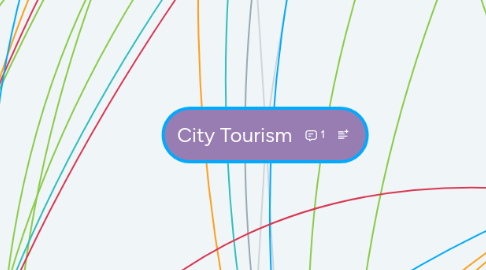
1. Stakeholders
1.1. Local residents
1.1.1. Students
1.1.2. People working in Deventer
1.1.3. People living in Deventer
1.1.4. Retired people
1.1.5. Entrepreneurs
1.1.6. Expats
1.2. Policy Makers
1.2.1. Government
1.2.2. Local Authoritites
1.2.3. UN
1.2.4. UNWTO
1.3. NGO'S
1.3.1. Foundations
1.3.1.1. NetSib
1.3.2. Associations
1.3.2.1. AITO
1.3.3. Other NGOs
1.3.3.1. OWHC
1.4. Media
1.4.1. TV
1.4.2. Radio
1.4.3. Internet
1.4.3.1. Social Media
1.4.3.1.1. Influencers
1.4.4. Magazines
1.4.5. Newspapers
1.4.6. Books
1.5. Tourist
1.5.1. Domestic tourists
1.5.1.1. Organized Mass tourists
1.5.1.2. Individual mass tourists
1.5.1.3. Explorer
1.5.1.4. Drifter
1.5.2. Inbound tourists
1.5.2.1. Organized Mass tourists
1.5.2.2. Individual mass tourist
1.5.2.3. Explorer
1.5.2.4. Drifter
1.6. Industry
1.6.1. Accommodation
1.6.1.1. hotels
1.6.1.1.1. Postillion Hotel Deventer
1.6.1.2. resorts
1.6.1.2.1. EuroParcs
1.6.1.3. Apartments
1.6.1.4. Hostels
1.6.1.4.1. Hostel Deventer
1.6.1.5. AirBnB
1.6.1.6. Campingsite
1.6.1.6.1. stadscamping
1.6.2. Food&Beverage
1.6.2.1. Bars
1.6.2.1.1. De Bisschop Deventer
1.6.2.2. Restaurants
1.6.2.2.1. Bella Roma
1.6.2.3. Cafés
1.6.2.3.1. San Tropez
1.6.2.4. Snackbars
1.6.2.4.1. T'pleintje
1.6.3. Employees
1.6.3.1. Suppliers
1.6.4. Travel Agencies and Tour Operators
1.6.4.1. TUI
1.6.5. Transport
1.6.5.1. bus companies
1.6.5.1.1. conexxion
1.6.5.1.2. qbuzz
1.6.5.1.3. veolia transport
1.6.5.2. taxi companies
1.6.5.2.1. uber
1.6.5.2.2. car rental companies
1.6.5.3. train companies
1.6.5.3.1. NS
1.6.5.4. bike rentals
1.6.5.4.1. swapfiets
1.6.6. Marketing and advertising agencies
1.6.6.1. DMO
1.6.6.2. DMC
1.6.6.3. VVV
1.6.7. Retail
1.6.7.1. Boutique Shops
1.6.7.2. Supermarkets
1.6.7.3. Malls and Shopping Centers
1.6.7.4. Department Stores
1.6.7.5. Chain Stores
1.6.7.6. Online Retailing
1.6.7.7. Souvenir Shops
1.6.7.8. Flower Shop
1.6.7.9. Weekmarkt op de Brink
2. Responsibilities
2.1. Industry
2.1.1. providing more employment
2.1.2. boosting the revenue of an economy
2.1.3. supporting cultural exchange
2.1.4. preservation of local culture and tradition
2.1.5. pressure of tourism on the destination
2.1.6. positive image of the destination
2.1.7. preservation of nature
2.2. Policy Makers
2.2.1. Managing and controlling tourism
2.2.2. To create livable cities and communities
2.2.3. Destination Promotion
2.2.4. Destination Management
2.2.5. Providing legislations, guidelines, regulations, measures and restrictions
2.2.6. Controlling Tourism
2.2.7. Constructing Infrastructure
2.2.8. Facilitating public
2.2.8.1. Educate locals
2.2.8.1.1. Enable local people to benefit from tourism
2.2.9. Protecting natural rights
2.2.10. Supporting Tourism Development
2.2.11. Supporting festivals and events
2.2.12. Creating safety
2.2.13. Creating livable cities and communities
2.2.14. Protecting interests of other stakeholders
2.3. Contribute to a more responsible tourism
2.3.1. Engaging visitors to a more sustainable tourism
2.4. environmental awareness
2.5. Create sustainable cities and communities
2.6. Tourists
2.6.1. Responsible consumption
2.6.2. Adapt to local lifestyle
2.6.2.1. intercultural sensitivity
2.6.2.1.1. resepect cultural customs, norms, rules
2.6.3. Purchase decisions
2.6.3.1. sustainability
2.6.3.2. money flow
2.6.3.3. transportation
2.6.3.4. working conditions
2.6.4. Environmental protection
2.6.4.1. no pollution
2.6.4.2. avoid CO2 emissions
2.7. Local Residents
2.7.1. Change locals and tourists behaviour
2.7.1.1. Intercultural sensitivity
2.7.2. Contribute to a more sustainable & responsible tourism
2.7.2.1. Environmental awareness
2.7.2.2. Responsible Consumption
2.8. NGOs
2.8.1. Build partnerships
2.8.2. Manage philanthropic resources
2.8.3. Serve as an ambassador
2.8.4. Build strong board
2.8.5. Be faithful to mission
2.8.6. Hold regular membership meetings
2.8.6.1. Keep supporters informed and motivated
2.8.7. Assist members
2.8.7.1. Represent members
2.8.8. Address human needs
2.8.9. Provide goods and services
2.8.10. Create awareness
2.9. Media
2.9.1. Provide accurate information
2.9.2. Access to resources
2.9.3. Research information
2.9.4. Create awareness
2.9.5. Transparency
2.9.6. Stimulate debate
2.9.7. Criticize
2.9.8. Transmit culture
2.9.9. Entertain
2.9.10. Educate
3. Impacts
3.1. Environmental Impact
3.1.1. DIRECT
3.1.1.1. loss of open space
3.1.1.2. overcrowding
3.1.1.3. improvement of the area's appearance
3.1.1.4. effects on landscape
3.1.1.5. Traffic
3.1.1.6. Noise
3.1.1.7. Pollution
3.1.2. INDIRECT
3.1.2.1. environmental protection and conservation
3.1.2.2. raising awareness on environmental protection
3.1.2.3. Reinforcing preservation of heritage and tradition
3.1.2.4. ecotourism and sustainable tourism
3.1.2.5. Preservation of historical buildings and monuments
3.1.2.6. Disturbance of flora due to exploitation of trails and roads
3.2. Socio-Cultural Impact
3.2.1. DIRECT
3.2.1.1. small carrying capacity
3.2.1.2. Increased crime and prostitution
3.2.1.3. Increase in anti-social behavior
3.2.1.4. Excessive drug use or drinking
3.2.1.5. Decrease in safety
3.2.1.6. Promotes cultural exchange
3.2.1.7. Improves quality of life
3.2.1.8. Overtourism
3.2.2. INDIRECT
3.2.2.1. Lack of respect from tourists
3.2.2.2. Negative image
3.2.2.3. A better quality of life for all members of society
3.2.2.4. Preservation of local customs and heritage
3.2.2.5. Increases recreational and leisure activities for residents
3.2.2.6. Unwanted lifestyle changes
3.3. Economic Impact
3.3.1. DIRECT
3.3.1.1. Growth in income
3.3.1.2. Seasonal unemployment
3.3.1.3. Employment Opportunities
3.3.1.4. Increase in cost of goods and services
3.3.1.5. Increase in local economy
3.3.1.6. Increase in the living standard of people
3.3.1.7. Increase in price of land and housing
3.3.1.8. Increased potential for imported labour
3.3.1.9. New business opportunities
3.3.2. INDIRECT
3.3.2.1. Economic development combined with sustainable practices making an economic growth
3.3.2.2. Development of infrastructure and facilities
3.3.2.3. Increases the range of shops and services
3.3.2.4. Increases the quality of public spaces and shops
3.4. Political Impact
3.4.1. DIRECT
3.4.1.1. New regulations have to be introduced
3.4.1.2. Rise in terrorism
3.4.2. INDIRECT
3.4.2.1. Business practices with low impact
3.4.2.2. tourism is used as a means of establishing international acceptability
4. Money Flow
4.1. From Local Residents
4.1.1. Living costs
4.1.1.1. Accommodations
4.1.2. Food&Beverage
4.1.3. Tickets
4.1.3.1. Events
4.1.3.1.1. Activities
4.1.4. Parking
4.1.5. Public transport
4.2. From NGO's
4.2.1. Donations
4.2.2. Membership dues
4.2.3. Grants
4.2.4. Funds
4.2.5. Charity
4.2.6. Government funds
4.2.7. The sell of goods and services
4.3. From Tourists
4.3.1. Food&Beverage
4.3.2. Accommodation
4.3.2.1. Overnight stay
4.3.3. Tickets
4.3.3.1. Museums
4.3.3.2. Galleries
4.3.3.3. Festivals
4.3.3.4. Concerts
4.3.4. Parking
4.3.5. Organised Tours
4.3.6. Souvenirs
4.3.6.1. Shops
4.3.7. Nightclubs
4.3.8. Transport

